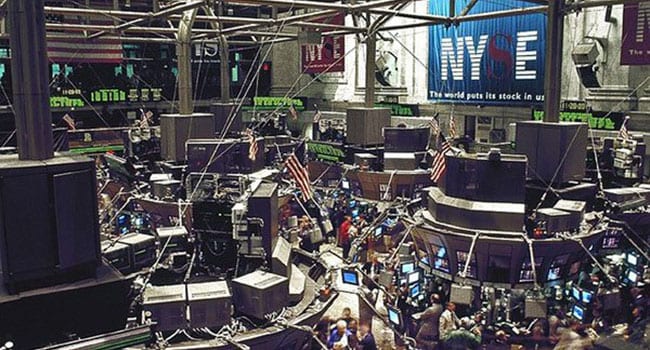By Kenneth Kaczkowski
and Isaac Maresky
Troy Media exclusive
The start of 2018 has seen markets flashing red, with investors questioning the stability of the market. February’s meltdown led to a significant market correction of over 10 per cent. Volatility has become just one of several fears, with the recent technology selloff and fears of a trade war sparking additional anxiousness.
Market valuation, essentially the price people are willing to pay for stocks, is reaching highs last seen before significant share price drops. This is typically measured with the price-to-earnings (PE) ratio – a multiple of how much investors are willing to pay for $1 of earnings. This number has historically averaged approximately 15 times the Dow Jones and S&P 500. Contrast that with the current PE ratios for the Dow Jones and S&P 500: respectively 26.7 times and 23.5 times, or roughly 67 per cent higher than the average.
Markets rebounded in the several years after the 2008 recession and headed towards record highs, while becoming more stable. The Chicago Board Options Exchange Market Volatility Index (VIX) steadily decreased. It has a historical average of about 19 but recently dropped as low as 9.14. A sudden increase in the VIX of over 75 per cent at the start of February led to investors panicking, ultimately leading to its first correction in over two years.
Undoubtedly, markets are reaching uncomfortably lofty valuation levels. As market prices increased, so did total money invested, peaking at nearly $100 trillion globally. As more people invest in the markets, particularly in passive investments such as exchange-traded funds, money managers have had no choice but to continue purchasing overvalued stocks, creating a snowball effect and driving markets even higher.
These past two weeks saw markets head into the red. First, markets saw a selloff in technology stocks and then the market as a whole as investors feared a trade war with China erupting. These worries have caused the VIX to spike 40 per cent.
It seems as if investors have forgotten how to gauge market uncertainty. Recently, any potential bad news has investors panicking.
This combination of market volatility and lofty valuations is particularly worrisome. Experts have pointed out that the market lacks support, meaning when it falls there won’t be anyone to catch it.
With markets off to a rocky start this year, it may be time for investors to take their feet off the gas. They would be prudent to assess market valuations as they continue to rise relative to actual earnings values. This will help to prevent potential shock losses if markets revert to historical norms.
Perhaps markets have already passed the point of no return and are doomed to drop. Exiting stock positions with higher valuations and returning to fundamental value investment principals is one way to build a margin of safety.
Frothy valuations and increased volatility mean markets may be heading into stormy territory. The current and future earnings of many companies don’t justify their high share prices. We’ve recently seen markets react unhealthily to negative news, suggesting that investors are ready to run.
With the world more connected than ever, herd mentality could magnify any future panic. When the herds form, it only takes the first sheep to run over the cliff before the rest follow.
Kenneth Kaczkowski is an equity research analyst in Munich. Germany. Isaac Maresky is a serial entrepreneur and investment banking professional with hundreds of millions of dollars of financings and M&A experience.
The views, opinions and positions expressed by columnists and contributors are the author’s alone. They do not inherently or expressly reflect the views, opinions and/or positions of our publication.




